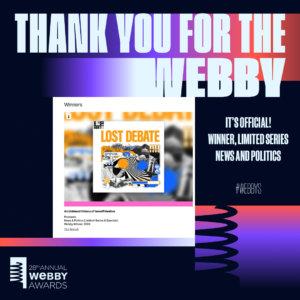This piece originally appeared in the November 28 edition of Persuasion.
On October 31, the Supreme Court heard oral arguments in two cases concerning the constitutionality of race-based admissions in higher education, one involving Harvard University and another the University of North Carolina. The Court is expected to hand down both decisions by June. What makes these cases unique among challenges to affirmative action is that where the plaintiffs in prior landmark cases were white, the plaintiffs here, represented by an organization called Students for Fair Admissions (SFFA), include Asian-Americans.
Of the two cases before the court, Students for Fair Admissions v. Harvard has gotten the lion’s share of the public attention not only because of Harvard’s name and prestige, but also because of what it has revealed about the school’s selection process. Admissions offices at elite universities like Harvard tend to be black boxes, sparing in the information they’re willing to share with the public. Prior to this case, we’d just have to take university officials at their word when they described their admissions practices. But because of the trial’s discovery process, the public has been granted access to years of admissions data. For the first time, the public has been able to peek under the hood of America’s most storied and elite institution, one that has served as a gateway to power and privilege at the highest levels of society.
We should be alarmed at what we’re seeing.
Let’s square up to one issue right at the start: SFFA is the brainchild of a man who is neither a student nor Asian, but a career conservative lawyer named Edward Blum who has prosecuted previous cases against affirmative action. To source plaintiffs for this case, Blum set up websites called harvardnotfair.org and uncnotfair.org, which invite anyone who has been rejected from either school to join the case. SFFA’s funding comes overwhelmingly from two conservative trusts.
It’s tempting, therefore, to dismiss SFFA v. Harvard as a purely political exercise, as the cynical ploy of a man whose previous attempts to destroy affirmative action failed, and who settled on sowing discord between minorities. Yet the uncomfortable reality is that if we can peer through the politics enfolding it, the case very well may have legal merit.
For much of its early history, Harvard’s admissions process was based solely on academic performance. In the 1920s, however, the university’s leaders grew alarmed by the increasing number of Jewish students who were earning admission. The university president proposed a fifteen percent cap on Jewish students, but that was deemed too overt by other Harvard administrators, who instead opted for what they called a “policy of equal opportunity.” In doing so, they moved from an objective system to one that adopted Columbia University’s pioneering “college application,” which was meant to assess “character” and “fitness.” Buried in Columbia’s eight-page document were two questions: “religious affiliation” and “mother’s maiden name in full.” Harvard and other Ivy League universities adopted similar application forms (one administrator gushed that there was “consequently no Jew question at Princeton.”) This more subjective system of admissions allowed Harvard to develop a plausible explanation for a nearly fifty percent drop in Jewish students in the years to come.
SFFA and its supporters believe that Harvard is using some of the very same tricks today to exclude Asian-American students. A brief jointly filed by the Louis D. Brandeis Center for Human Rights and the Silicon Valley Chinese Association Foundation argued that the “similarities between Jewish admissions being reduced in the 1920s and 1930s and increased Asian-American admissions being reduced since the 1990s are unmistakable.”
Applicants to Harvard are now principally evaluated using five ratings: academics, extracurriculars, athletics, recommendations, and personality. The most objective of the measures, the academic rating, is composed of the student’s standardized test scores and grade point average. The personality rating is far more subjective and is based on an admissions officer’s appraisal of each applicant’s capacity for various character traits such as likeability, courage, and integrity through a review of alumni interviews, high school recommendations, and admissions essays.
SFFA believes that discrimination against Asian-Americans mostly took place in the personal ratings. To illustrate that point, they hired Peter Arcidiacono, a Duke economist, to delve into Harvard’s data from the past decade.
Arcidiacono found that 60% of Asian-Americans received one of Harvard’s two highest academic ratings compared to 46% for whites, 17% for Hispanics, and 9% for blacks. UCLA economist and law professor Richard Sander, writing in an amicus brief, compared those numbers to the “personal” ratings, finding that “for applicants in the 10th (top) academic decile, the percentage of applicants with high personal ratings was 49% for blacks, 36% for Hispanics, 31% for whites, and 23% for Asian-Americans.” This pattern was repeated at every academic decile. Harvard’s extracurricular ratings (presumably a proxy for leadership), which are more objective and mechanistic than the personality ratings, follow a similar pattern as the academic ratings—with Asian-Americans ranking at or near the top among racial groups. Put simply, in Harvard’s eyes, Asian-Americans were most likely to be elite in measurable academic performance and extracurricular leadership but least likely to show exceptional personal character.
In other words, whenever a measurable and observable metric is used, Asian-Americans do well, but whenever discretion is given to admissions officers and they don’t have to be transparent about their process, the advantage for Asian-Americans mysteriously vanishes. This would be like Usain Bolt beating his nearest opponent in the 100-meter sprint by a full second, only to lose the race because judges felt he didn’t run with enough effervescence (an actual trait Harvard claims to look for in its personality ratings).
I asked SFFA’s former Executive Director, Cory Liu about this discrepancy. “The personal rating is another way for them to consider race,” Liu said, “to further amplify the overall consideration of race and to get to the results they want.” To Liu, even if we took Harvard at their word that they intend the personal rating to be race-neutral, that would give rise to the question of implicit bias. “If the person thinks they’re being race-neutral,” Liu said, “but actually the results, year after year, show that Asians are disadvantaged, then maybe there’s something wrong in the evaluators’ eyes and perhaps students who come from immigrant backgrounds who spoke two languages at home, maybe they’re going to be a little less confident or a little less outgoing because they’ve struggled to fit in and things like that.”
The trial record is rich with information that suggests something more explicit may have been at hand. Perhaps the most damning was testimony from William Fitzsimmons, Harvard’s Dean of Admissions, who shared that they routinely sent letters to what they deemed “sparse country”—states that are less dense, and ostensibly underrepresented at Harvard. Sparse country students with Preliminary SAT scores of 1310 or higher would get such letters—except for one group: Asian-Americans. For an Asian male to get such a letter, they’d have to score at least 1380.
At trial, the plaintiff’s attorney asked Fitzsimmons to explain why Asians had to clear a higher bar to receive letters. Fitzsimmons gave a convoluted answer that compared students who’ve “only lived in the Sparse Country state for a year or two” with students who’ve “lived there for their entire lives under very different settings.” He never explained how he was able to determine this duration based on ethnicity.
Taken together, the divergence between the personal rating and more objective measures, the inexplicable discrepancies in “sparse country” recruitment, and the pernicious origins of Harvard’s holistic admissions process combine to make a compelling case for a finding in favor of the plaintiffs. Given this overwhelming evidence, and the current makeup of the court, SFFA will almost certainly win this case—and do so with a more diverse group of plaintiffs than affirmative action opponents have put forth in the past.
The conflict at the heart of this case is personal for me. My name is Ravi Gupta. If you Google my name the first two results are a partner at Sequoia Capital and a scientist who cured a man of HIV. I am neither of those people, and I don’t know them. But there’s a good chance they had South Asian parents who were obsessed with academics, as my father was. That’s likely where our similarities end. My Indian father left me when I was in middle school and I was raised by my white mother in a blue-collar neighborhood in Staten Island. In my teenage years, I got my stomach pumped for alcohol poisoning, was caught cutting school, was suspended multiple times for fighting, and was arrested once after a fight gone wrong.
My mom pulled me out of the local district public school and enrolled me in Catholic school, which—to use a well-worn cliche—saved my life. Through a stroke of luck, I was accepted to Binghamton University, the leading light of the State University of New York system. I was such a screw-up that my high school guidance counselor called Binghamton’s admissions office because he thought I was lying about getting in. At Binghamton, I turned myself around, earned straight A’s, and was rewarded with admission to Yale Law School.
When I wrote essays to Yale and other top law schools, I was well aware that the adversity I’d overcome was an asset, and I leaned into it. If the admissions office took that into account for their equivalent of a personal rating, I’m glad they did. But I was also aware, even back then, that my name wasn’t an asset. Whenever given the choice, more often than not I declined to fill in a bubble for “race” in applications. I know many Asian-Americans who do the same, knowing full well it’s futile because our names give us away.
This case, despite its cynical origins, has merely given Asian-Americans proof of something we’ve long known to be true: The very policy that was established to even the racial scales in higher education has systematically punished us for our race.
But of course, it isn’t just about us Asian-Americans. In my late twenties and early thirties, I founded and led a charter school in north Nashville that served mostly black students hailing from a neighborhood with the highest incarceration rate in the country. I love my former students, and if they can get an edge in admissions at the expense of people who grew up middle-class like me, I’d gladly make that trade. But for us to create a legitimate system that can both withstand legal scrutiny and garner political legitimacy, we have to be more honest with the people we are asking to sacrifice for the greater good. And we have to use admissions preferences to help the truly disadvantaged. That’s why I support a system that favors students from economically disadvantaged backgrounds over a system based on race. Given that black children are much more likely to experience poverty than white students, such a system would disproportionately help many of the students who would have benefitted under the old system. But it would do so without giving preference to students who don’t need the boost, or by pitting different disadvantaged ethnic groups against each other.
After June, race-conscious measures will likely be off the table, which means that policies I support, like those based on class, will likely rise in prominence. Those policies are allowed to be more heavy-handed and explicit, as neither the Civil Rights Act nor the Fourteenth Amendment prohibits discrimination on the basis of wealth. Liberals will claim this shift will be a step back for marginalized populations, but I’m inclined to believe the new reality could be more progressive and considerably more popular. At the very least, soon enough, our most storied institutions will no longer be allowed to blatantly discriminate against Asian-Americans. And for that, we should all be grateful.




